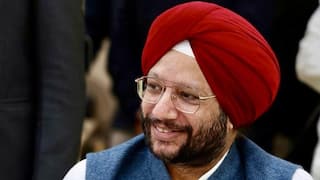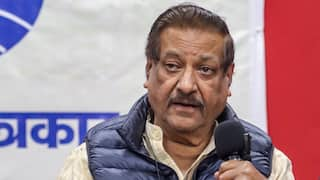Power Minister R K Singh Warns Against Using Borrowed Funds To Distribute Free Electricity
Singh said he has been telling states that electricity is not free. "If any state wants to give free power to any category of people, they can go ahead and do so, but you have to pay for it," he added

Power Minister RK Singh has warned of a debt trap for states like Punjab using borrowed money to provide free electricity, saying such populist schemes are fine only if a state has finances.
Electricity, like any other commodity, involves the cost of generating it, and if a state is to provide it for free to a section of consumers, it also needs to have finances to pay the generating utility. If the generating utility isn't paid, electricity will not be produced in the first place.
In an interview with PTI, Singh said he has been telling states that electricity is not free. "If any state wants to give free power to any category of people, they can go ahead and do so, but you have to pay for it".
However, states with already high debt are resorting to such populist measures, forcing them to borrow more to pay generating utilities, resulting in a debt trap.
"You should not be bringing your state to a situation where it falls into a debt trap. Many of the states are close to debt traps because of freebies," the minister said.
Asked to name states that do so, the bureaucrat-turned-politician said, "For example Punjab".
Since coming to power in Punjab in 2022, the Aam Aadmi Party (AAP) government has taken several populist measures, including free power up to 300 units per household.
Punjab borrowed as much as Rs 47,000 crore in the first two years of the AAP government, adding to the already high debt of the state. This has strained finances where a good part of the tax revenues earned went into paying interest and principal of the previous borrowing.
"Many of these states are close to debt trap," Singh said.
He explained further that states are borrowing to give freebies so that they can stay in power, and the burden is being shifted onto the succeeding generations.
For future generations, there will be no money for roads, building hospitals, and schools because whatever revenues will come will go into repayment of loans, he added. When asked to give an example he said, "For example Punjab. Many of these states are close to debt trap".
Also Read : FPIs Turn Cautious, Dump Indian Equities Worth Rs 325 Crore In April So Far
About the power pilferage, he said, "The AT&C (aggregate technical and commercial losses) losses used to be 27 per cent. Today it is 15 per cent, and nobody thought it would be possible. I have done it by a combination of various measures. Incentives, legal penalties, everything".
He also stated that he wants to further bring it (AT&T losses) down to about 10-12 per cent.
Singh also stated that many states had outstanding dues of Rs 20-30 thousand crore, which have been brought down.
"So, I made monthly instalments in the rule itself (for repayment of outstanding overdue). As a result, current dues are up to date, arrears have come down to Rs 40,000 crore from 1.45 lakh crore," he said. When asked about providing the consumer with the option of multiple service providers, the minister promised to get through the required amendments in the Electricity Act 2003.
The minister introduced the Electricity (Amendment) Bill, 2022, for the purpose in the Lok Sabha on August 8, 2022, which was sent to the standing committee for vetting on the same day. The committee has not given its report on the bill. But since the bill was introduced in the Lok Sabha, the new government will have to introduce it again. "I will table it again. So, what will happen (upon the passage of the bill)? There will be a competition, and there will be better services. The regulator will fix the ceiling price. If someone (operator) asks for Rs 4 per unit and another 3.5 per unit, you will prefer that (Rs 3.5).
"So, we tabled the amendment. It went to the committee. It is there only. I will have to table it again," Singh said. About the ambitious renewable energy target of 500 GW by 2030, he informed that India will achieve the target and has already locked in around 360 GW of renewables, which includes 190 GW of operational capacity. "...my installed capacity of RE is about 190 GW, I have 103 GW under construction, that makes it 290 GW. I have 72 GW under bids. So, I am already at about 360 GW. I will reach it before time as I reach all my targets," the minister said.
Replying to a query about his top priorities if the BJP-led government wins the general election and he again becomes the power minister, Singh said the priority, as of now, is to add more capacity as fast as possible.
"I see my demand doubling by 2030. Imagine for a country like ours demand going up from 243 GW to I think the demand put 2032 to be almost 400 GW. I think it will be slightly more," he added.
About the planned addition of 80 GW more coal-based thermal power capacity, he stated, "I am not going to compromise on the availability of power. Right now I have lots of solar, but at night you don't have solar. So, at night, you need electricity. Wind blowing is not there in the morning and evening...sometimes".
He also said for phasing out coal-based thermal power generation capacity, there is a need for viable storage as it is required for round-the-clock renewable energy.
(This report has been published as part of an auto-generated syndicate wire feed. Apart from the headline, no editing has been done in the copy by ABP Live.)
Related Video
Union Budget 2025: Arvind Kejriwal lists the shortcomings of the Modi government's budget | ABP News | AAP





































